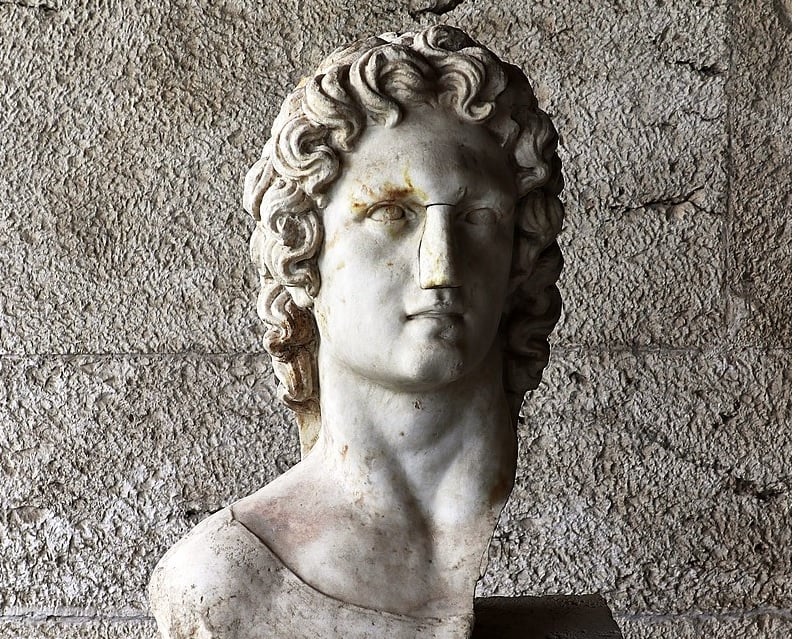
A magnificent marble bust of Helios, the ancient Greek sun god, that was unearthed at the ancient Agora of Athens in 1970 is one of the most spectacular exhibits of the Ancient Agora Museum.
Helios was said to drive his chariot each day from east to west across the sky, mirroring the movement of the sun. He is usually depicted wearing a radiate crown symbolizing the rays of the sun.
Just unearthed marble portrait of Helios from the Ancient Agora of Athens and Temple of Hephaestus in the back, July of 1970.📸 pic.twitter.com/PpDzTOq1DH
— A R C H A E O L O V E R (@byarchaeolover) July 18, 2022
Helios was a guardian of oaths and also the god of sight.
Though Helios was a relatively minor deity in Classical Greece, his worship grew more prominent in late antiquity thanks to his identification with several major solar divinities of the Roman period, particularly Apollo and Sol.
The Roman Emperor Julian made Helios the central divinity of his short-lived revival of traditional Roman religious practices in the 4th century AD.
Helios’ most notable role in Greek mythology
Helios figures prominently in several works of Greek mythology, poetry, and literature in which he is often described as the son of the Titans Hyperion and Theia and as brother of the goddesses Selene (the Moon) and Eos (the Dawn).
Helios’ most notable role in Greek mythology is the story of his mortal son, Phaethon, who asked his father for a favor; Helios agreed, but then Phaethon asked for the privilege to drive his four-horse fiery chariot across the skies for a single day.
Although Helios repeatedly warned his son against this choice and explained the dangers of such a journey that no other god but him was capable of bringing about, Phaethon was hard to deter, and Helios was thus forced to hand him the reins.
As expected, the ride was disastrous, and Zeus struck the youth with one of his lightning bolts to stop him from burning or freezing the earth beyond salvation.
Other than this myth, Helios occasionally appears in myths of other characters, witnessing oaths or interacting with other gods and mortals.
Alexander the Great was given his name
One of the titles given to Alexander the Great was Helios, and depictions of the sun god from the Hellenistic period onwards were heavily influenced by portraits of Alexander.
The surviving portraits of Alexander the Great are noteworthy for the wide range of styles employed to portray his unique physiognomy. The treatment of his leonine hair, for example, can be long and wavy in some portraits while others emphasize the characteristic cowlick.
Some show the Macedonian ruler with a pronounced crease in the forehead as with this image of Helios-Alexander. Portraits of Alexander continued to be produced throughout the Hellenistic period and beyond into Imperial Rome.
The Roman love of important historical characters, coupled with their insatiable demand for ancient works of art, meant that portraits of Alexander and Alexander as Helios continued
to be popular well into the Roman Imperial period. By this time, images of Helios were entirely conflated with those of Alexander.
See all the latest news from Greece and the world at Greekreporter.com. Contact our newsroom to report an update or send your story, photos and videos. Follow GR on Google News and subscribe here to our daily email!



